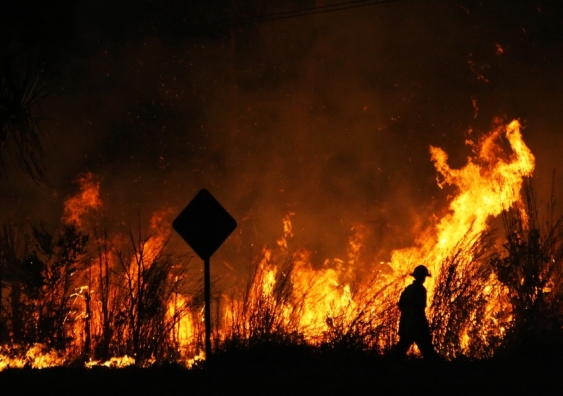Past Compliance: Enhancing Residential Or Commercial Property Security with a Thorough BAL Report Analysis
Past Compliance: Enhancing Residential Or Commercial Property Security with a Thorough BAL Report Analysis
Blog Article
Just How BAL Report Impacts Shrub Fire Defense Steps
In the realm of bush fire security, the Structure Strike Level (BAL) record stands as an important device that considerably affects the security and strength of buildings in fire-prone areas - BAL Report. The impact of a BAL analysis extends far beyond simple documentation; it works as the foundation for establishing the appropriate construction criteria and fire defense measures required to alleviate the risks positioned by bushfires. As neighborhoods come to grips with significantly serious fire seasons, comprehending exactly how the BAL report shapes these safety measures becomes extremely important for builders, policymakers, and homeowners alike
Recognizing the Bushfire Strike Degree

Significance of BAL Report Assessment

In Addition, the BAL report evaluation functions as a fundamental action in abiding by legal responsibilities and needs associated to bushfire security. Neighborhood councils and authorities typically mandate the entry of a BAL record as component of the planning and structure authorization procedure to make certain that residential properties are appropriately protected against bushfire dangers. Stopping working to carry out a thorough BAL report assessment can result in insufficient security steps, leaving properties susceptible to devastating bushfire incidents.
Construction Specifications Based Upon BAL
A detailed understanding of the Bushfire Assault Degree (BAL) enables residential property proprietors to execute building requirements tailored to their particular danger account. Building criteria based on BAL are essential in reducing the impact of bushfires on properties. The BAL score classifies the prospective risk a home faces throughout a bushfire on a range from BAL-Low to BAL-FZ (Fire Zone)
Implementing Fire Defense Actions
With the foundation of building criteria based on Bushfire Attack Degree (BAL) in place, the focus his response currently changes towards the functional implementation of fire security actions to strengthen buildings against bushfire threats. Easy measures consist of making use of fireproof structure products, setting up ash guards on vents, securing spaces in roof coverings and wall surfaces, and maintaining a clear space around the home totally free from combustible greenery. By incorporating both passive and active approaches, properties can dramatically minimize their her comment is here vulnerability to bushfire occurrences and increase the safety of owners.
Shielding Houses Versus Bushfires
Efficiently securing homes against the destructive impacts of bushfires calls for a proactive and comprehensive approach to fire defense actions. Additionally, sealing vents and voids to stop cinder intrusion, as well as integrating fire-resistant doors and home windows, can aid strengthen the home's defense against bushfires. By embracing an aggressive stance and integrating these safety actions, homeowners can significantly boost their possibilities of safeguarding their homes visit their website versus bushfires.
Conclusion
In conclusion, the Bushfire Strike Degree (BAL) record plays a vital role in figuring out the needed security actions against bushfires. Executing fire security actions based on the BAL report is essential in securing residential properties from possible bushfire threats.
In evaluating bushfire danger to buildings, understanding the Bushfire Assault Degree (BAL) is a critical element for applying reliable defense actions. Overall, a clear understanding of the Bushfire Attack Degree is essential for implementing adequate protection measures and alleviating the influence of bushfires on residential or commercial properties.

Report this page